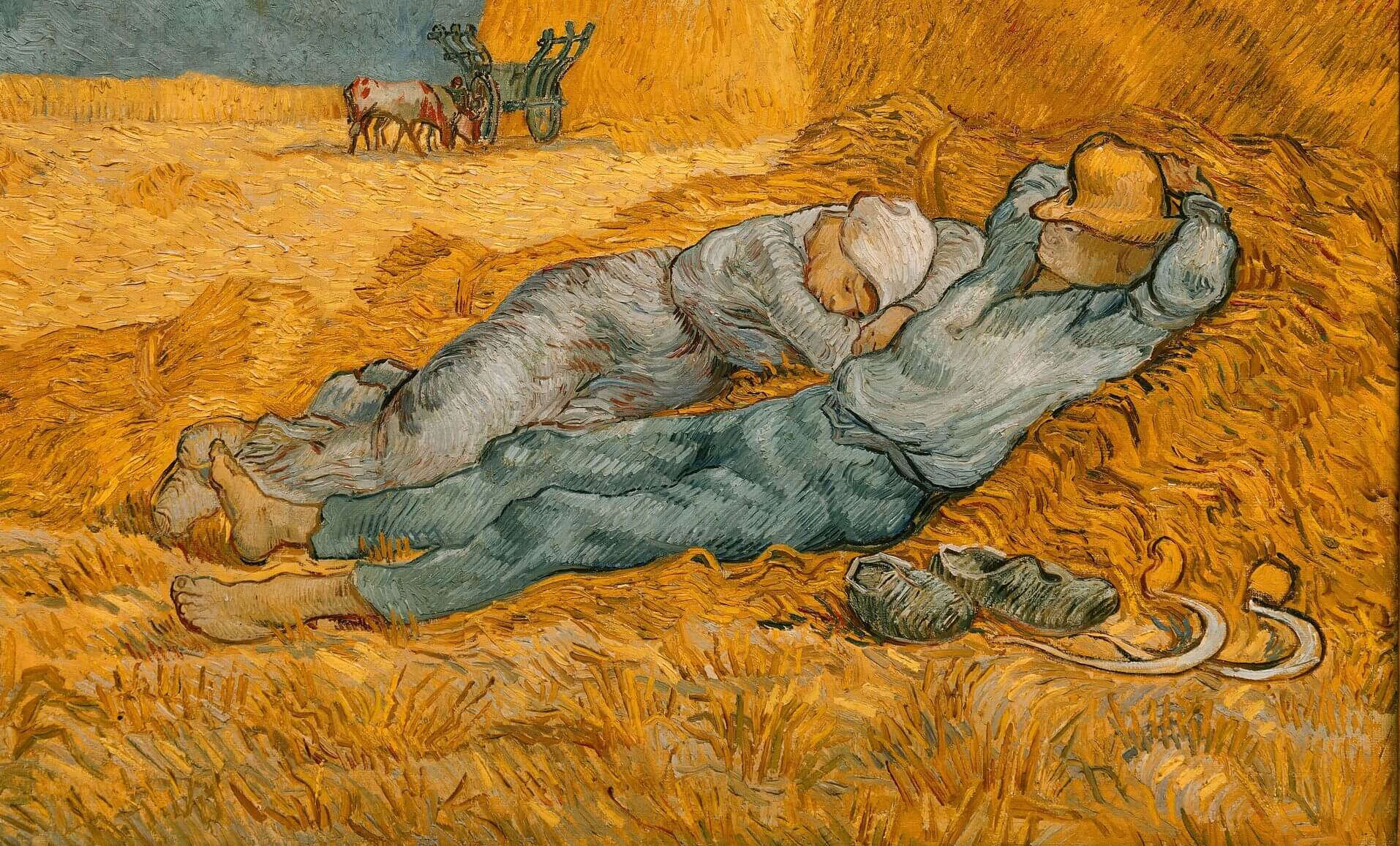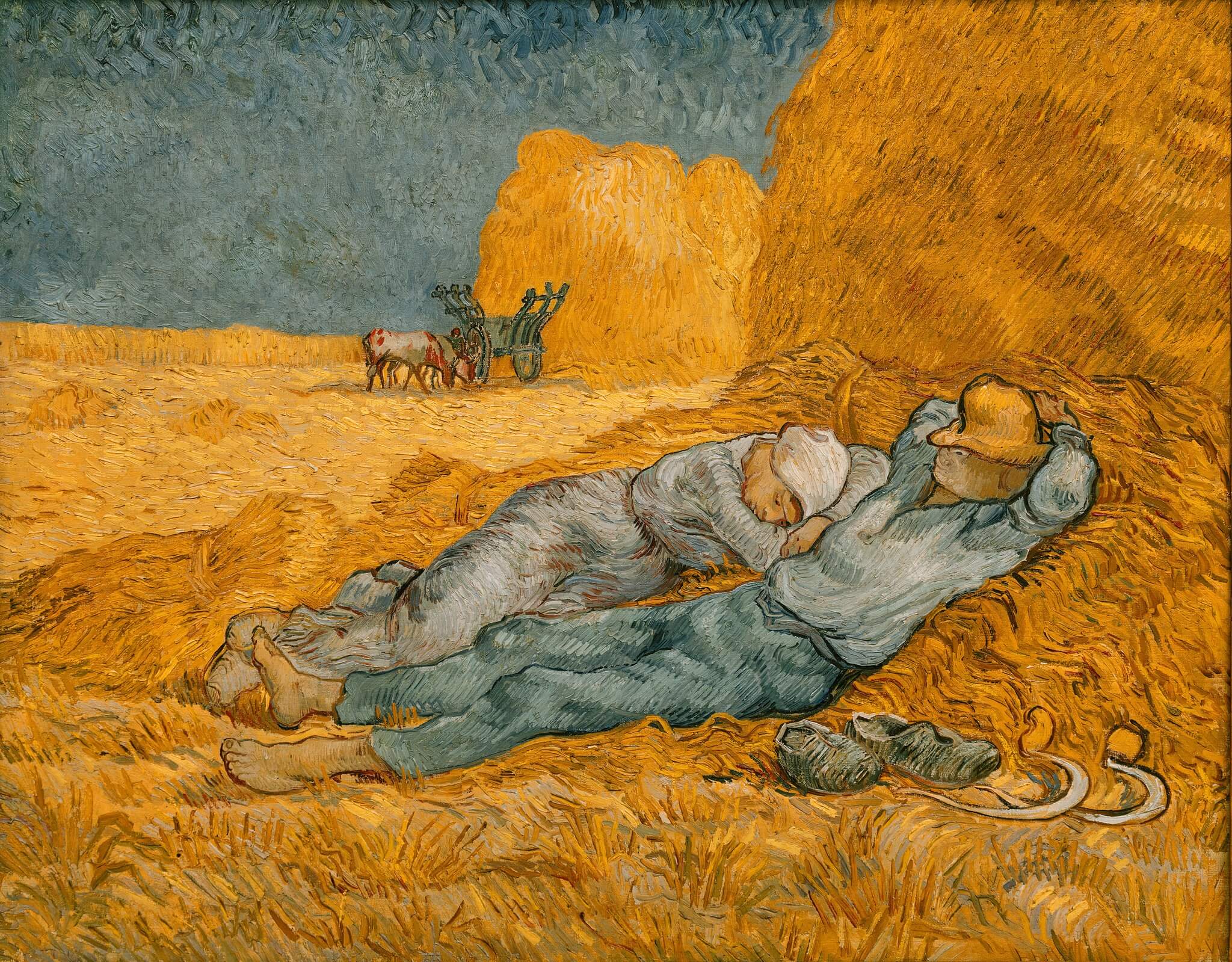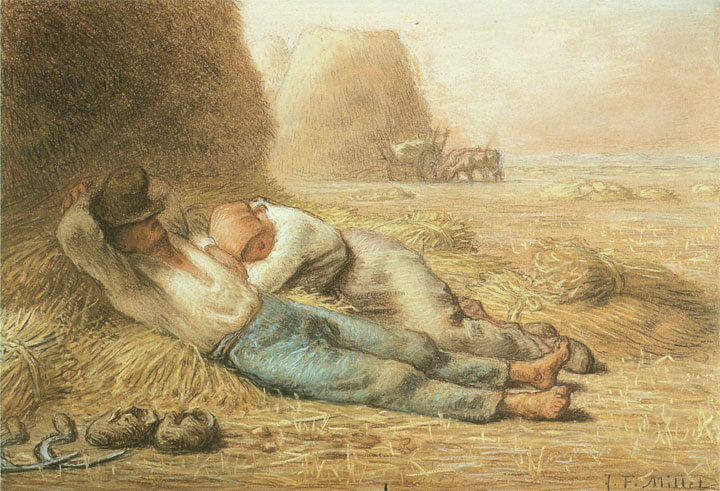“La Siesta” by Van Gogh, a copied work of art

Taking inspiration from your peers is an essential part of making art: a way to experiment with new techniques, to find ideas, and to pay homage to artists we greatly admire.
Vincent van Gogh’s ‘La Siesta’, one of the most famous paintings by the great Dutch artist, falls into this latter category: not everyone knows that this work is a very faithful reproduction of a drawing by Jean Millet, a French artist whom Van Gogh greatly admired.

This wasn’t the first time Van Gogh had reproduced a drawing by Millet, a colleague whom Van Gogh considered “more modern than Manet”. The inspiration is clear, as the composition is almost entirely based on Jean Millet’s work: the man and woman lying on the hay, the sacks and scythes in the foreground, the cart in the background.
But although the subjects are the same, the result is incredibly different: Van Gogh’s work vibrates with his very personal use of color, made up of strong contrasts between complementary blues/violets and yellows/oranges.

Van Gogh’s “La Siesta”, like many of his works, manages to convey two contrasting feelings. On the one hand, the calm associated with sleep, with resting from the fatigue of work.
On the other hand, the vibration of the color, which seems to convey a slight sense of unease, as if all this calmness were only apparent.
Painted in Saint-Rémy in Provence, where Van Gogh was confined to an asylum for the mentally ill, The Siesta perfectly sums up his art: a constant tension between the objective representation of the world and the artist’s very personal view of reality
Did you like this article? Find out more here
DISCOVER THE OTHER ARTICLES